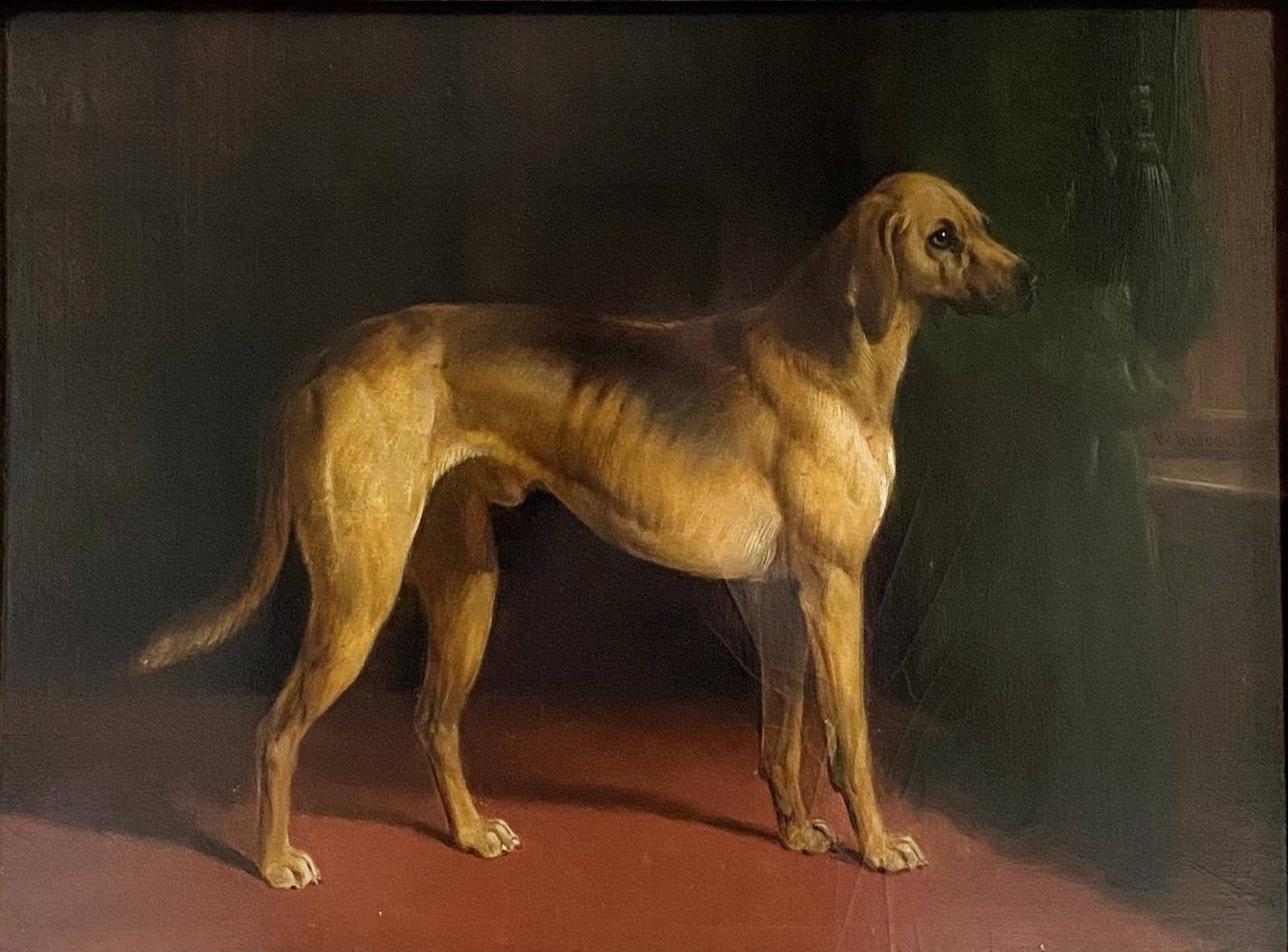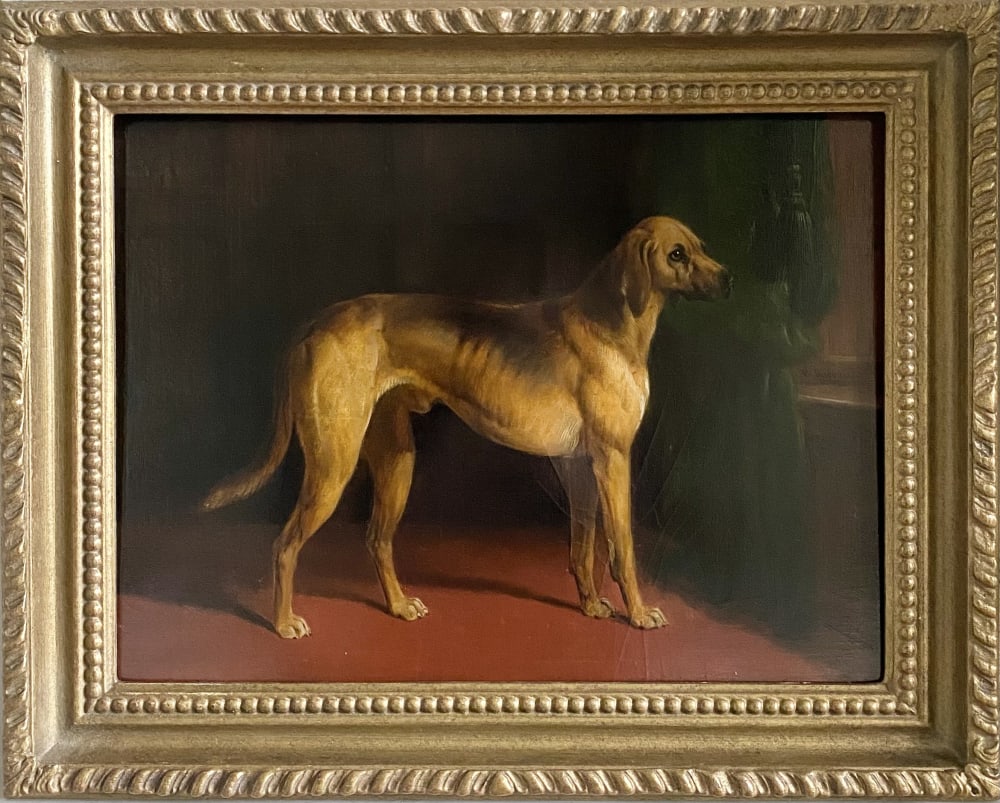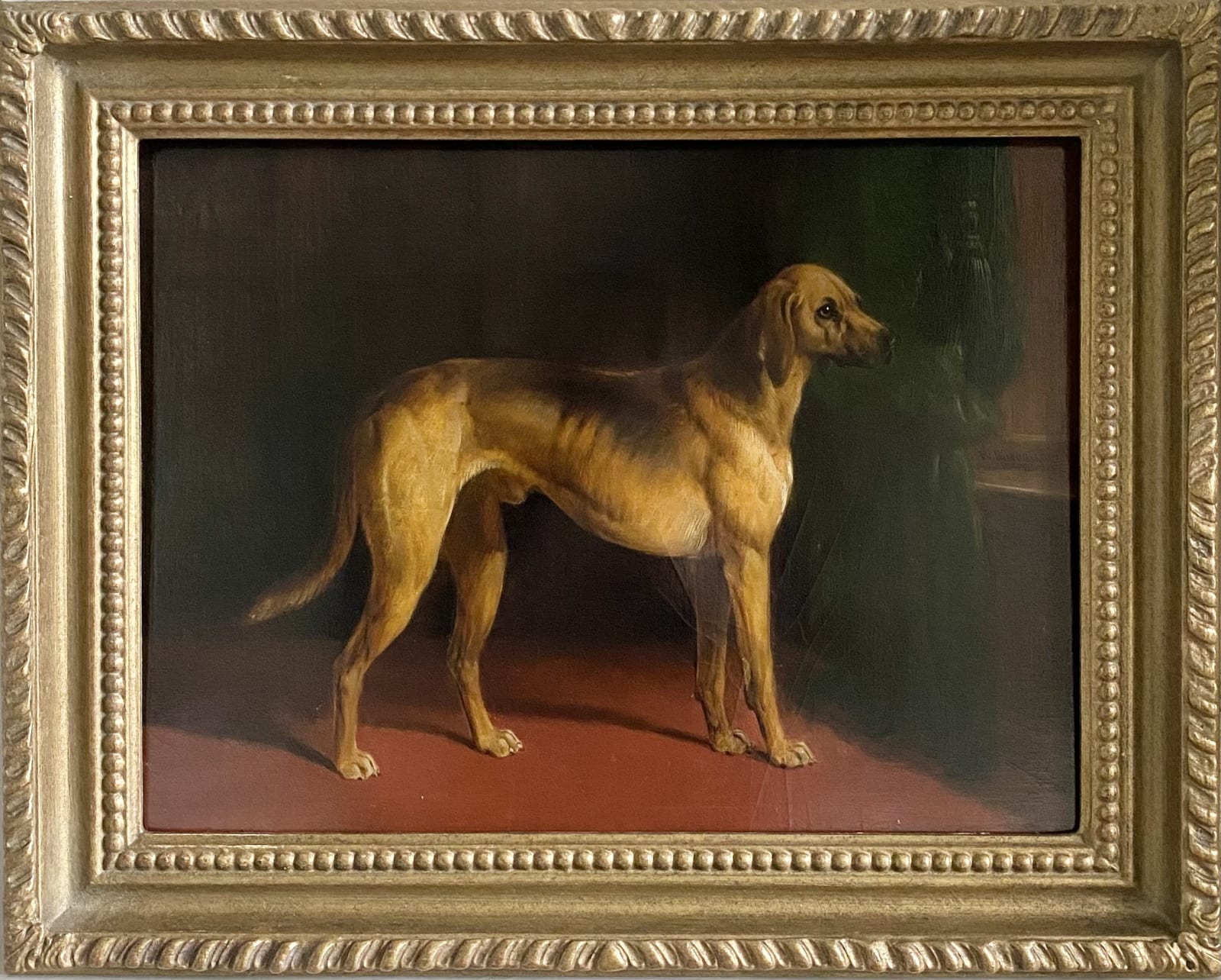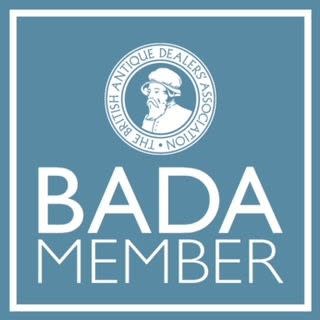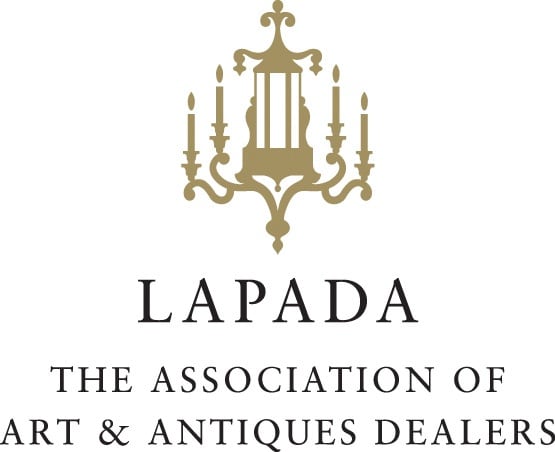William Barraud (1810-1850)
Provenance
Private collection, SussexLabel on reverse for The Parker Gallery, Albermarle Street, London, marked with date of 1959.
Literature
Sir W. Gilbey, Animal Painters of England, London, 1900, I, p. 54.Portrait of a hound (possibly a Great Dane) standing in an interior with finely detailed wood panelling and red carpet beside a sumptuous emerald green curtain held with green silk cord and tassels. Signed and dated 1847 middle left.
Oil on panel.
William Barraud (1810 – 1 October 1850) was an English animal painter and illustrator, and was the brother of Henry Barraud, with whom he collaborated on many works.
He was born in Lambeth in London, one of seventeen children of William Francis Barraud (1783–1833), a clerk in the Custom House, and Sophia (née) Hull. The family was of French Huguenot origin that had come over to England at the time of the revocation of the Edict of Nantes. His younger brother Henry Barraud was also a notable artist, and another, Edward, although talented in art did not take it up as a profession.
On leaving school he is said to have become a clerk in the Custom House where his father worked (although there are no records of this), but eventually became a pupil of artist Abraham Cooper. As an animal artist he specialised in painting horses and dogs, exhibiting at the Royal Academy from 1829–50, the British Institution from 1828–49 and the Society of British Artists. His work was popular with huntsmen and dog owners. He also produced some historical and landscape paintings.
William shared a studio, from 1835 until his untimely death, with his brother Henry, and collaborated on many subject pictures with himself painting the animals and Henry the figures. Several of these joint works were exhibited at the Royal Academy. The brothers also produced a book together entitled "Sketches of Figures and Animals" (H. Graves and Co. c. 1850). William also collaborated on another book with fellow artist Thomas Fairland (1804–52), "The book of animals drawn from nature" (C. Tilt, 1846).
